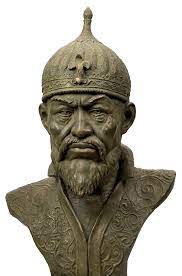The Timurids
The Timurids were a Turkic-Mongol dynasty that ruled over a vast territory in Central Asia and the Middle East during the late medieval period. The Timurids emerged as a political and military force in the late 14th century, when Timur (also known as Tamerlane), a prominent Turkic-Mongol leader, conquered much of Central Asia, Iran, and parts of India.
Under Timur's rule, the Timurid Empire reached its zenith, with its capital at Samarkand becoming a center of culture, art, and learning. Timur was known for his military prowess, but he was also a patron of the arts and sciences, and he supported the development of architecture, poetry, music, and calligraphy.
After Timur's death in 1405, his empire was divided among his sons and grandsons, who continued to rule over various parts of Central Asia and the Middle East. The Timurids were known for their political instability, with frequent struggles for power among different branches of the family.
Despite these challenges, the Timurids continued to be important patrons of the arts and culture. The Timurid period saw the development of a distinctive Timurid style of architecture, characterized by its intricate geometric patterns, vivid colors, and use of glazed tiles.
The Timurids were also known for their contributions to literature and science. Timur's grandson, Ulugh Beg, was a prominent astronomer and mathematician who established an observatory in Samarkand and made significant contributions to the study of astronomy.
The Timurid dynasty declined in the 16th century, as it faced increasing pressure from the expanding Uzbek and Safavid empires. However, the Timurids left a lasting legacy in the cultural and artistic traditions of Central Asia and the Middle East. Their influence can still be seen today in the vibrant art, music, and literature of the region.

Comments
Post a Comment